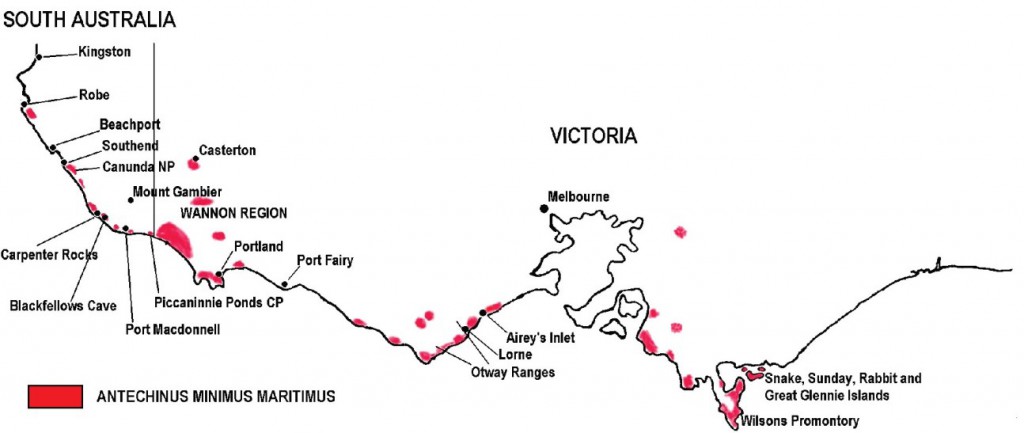Introducing our newest nationally threatened species: the Swamp Antechinus
Without much fuss or fanfare, several weeks ago six species were added to the ‘Vulnerable’ category under our national environment legislation – the Environment Protection and Biodiversity Conservation Act 1999.
One of those species, the mainland sub-species of Swamp Antechinus (Antechinus minimus maritimus), occurs across a large stretch of NGT’s focal region – so now is the time to get acquainted! The conservation advice prepared by the Threatened Species Scientific Committee that justifies the listing can be viewed here.
In South Australia, where the species is already considered Endangered under state legislation, the Swamp Antechinus almost exclusively occurs in near-coastal wetland habitats from Robe eastwards to the state border, in habitats like those we recently discussed at the Karst Rising Springs workshop and presentation evening in Port MacDonnell.
In Victoria, the species is also predominantly coastal, but has also been recorded in a number of inland heathy woodland sites – particularly those within the catchment of the Glenelg River (the Wannon region inland as far as Casterton) – and continues east around the coast to Wilsons Promontory, where it also occurs on a few off-shore islands.
The following map which is still fairly current (from my honours thesis, written many years ago!) puts things in perspective:
As you can see, the species’ distribution is highly fragmented, and their preference for productive, coastal swampy habitats has made them particularly vulnerable, given the extent of drainage and development that has occurred along our coast.
So while it is obviously not great that the sub-species is now considered threatened at the national level, it does have the positive side-effect of enabling us to draw additional attention to both the species, and more importantly, its habitat. After all, our coastal swamp scrub (also know as silky tea-tree wet heath) wetlands in particular provide crucial habitat for a wide range of other species that also need our help.
If you come across a dead Swamp Antechinus, which is not uncommon this time of year (due to the fact that all males die off during the winter after the breeding season), then please seal it up well in a plastic bag, pop it in the freezer and get in touch – as all records of this species are quite important.
Finally, so that you don’t get confused, hopefully the guide below will help you work out how to tell the Swamp Antechinus (a marsupial) apart from some other native species, like the Swamp Rat and Bush Rat (native rodents), that it is commonly found in the same habitats with.




